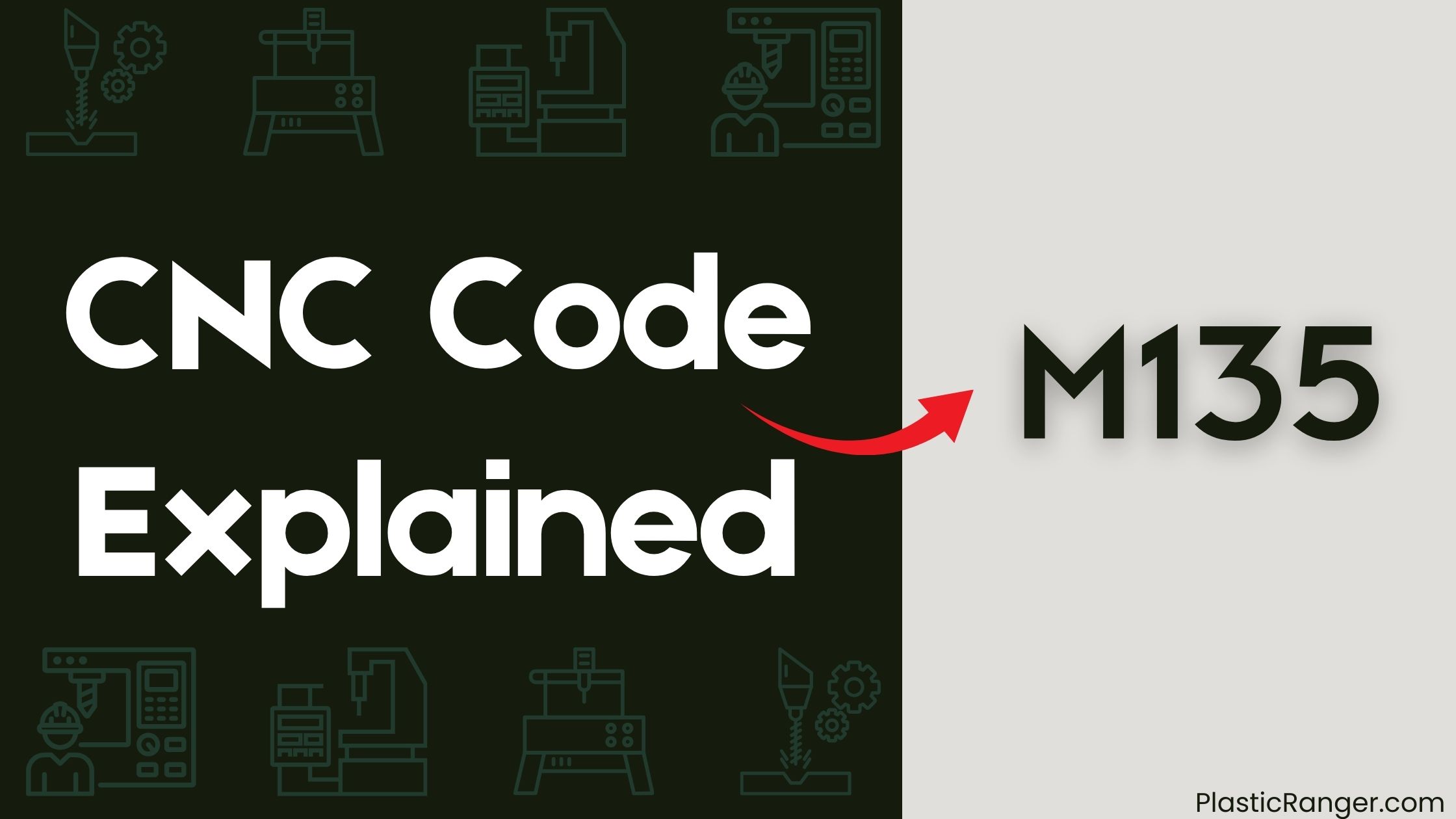Welcome to our simple guide on the M135 CNC code. Whether you are new to CNC programming or an experienced machinist, understanding the M135 code is essential.
This guide will explain everything you need to know about this unit mode command—what it is, when to use it, and why it matters.
(Step-by-step.)

Key Takeaways
- M135 CNC code sets laser mode, affecting machine behavior during laser-based operations, and requires correct parameter setting for optimal results.
- The code specifies laser mode, power, and frequency, which must be accurately set to prevent errors and achieve desired outcomes.
- Correct sequencing of M135 with other G-codes, such as G84 and M3, is crucial for rigid tapping on Makino S56 machines with Pro3/Fanuc controllers.
- Feed rate unit and tap pitch in TPI must be correctly specified in the F field to ensure optimal feed rate control and thread quality.
- Proper parameter settings, including spindle synchronization and coolant pressure, are essential for precise thread formation and efficient chip removal.
Understanding M135 CNC Code
When working with CNC machines, understanding M135 CNC code is essential to optimize your machining processes.
This code is used to set the laser mode, which affects the machine’s behavior during laser-based operations.
To get the most out of your CNC machine, you need to know how to correctly set the parameters in the M135 code.
This involves specifying the laser mode, such as on, off, or standby, as well as setting the laser power and frequency.
Proper parameter setting is critical to achieving the desired results and preventing errors.
G-Code Syntax and Sequencing
Get familiar with the G-code syntax and sequencing required for the M135 command to function correctly on a Makino S56 machine with a Pro3/Fanuc controller.
You’ll need to use the correct sequence for rigid tapping, which involves using M135 before the G84 canned cycle, and including the M3 command before each tapping cycle to guarantee proper spindle control.
Be aware of G code variations, such as specifying G94 or G95 to determine the feed rate unit, with G95 typically used for tapping.
Understand the Syntax nuances, like the F field specifying the feed rate, and how the tap pitch in TPI can also be used in the F field for rigid tapping.
Command interactions, such as parameter settings, must also be correctly configured to facilitate rigid tapping and control the feed rate and acceleration.
Machine Setup and Rigid Tapping
Proper machine setup is essential for successful rigid tapping on your Makino S56 machine with a Pro3/Fanuc controller.
You’ll need to verify machine calibration is accurate, as any deviations can affect the tapping process.
Tool selection is also pivotal, considering the tap size and material you’re working with. In this case, you’re using a 5/16-18 tap for 4140PH material.
Rigid tapping techniques also come into play, and you’ll need to adjust parameter settings like #5201 bit 4 and #5211 to control the tapping process and feed rate.
Feed Rate and Units Explained
You need to understand the feed rate and units to optimize your M135 CNC code for rigid tapping on your Makino S56 machine.
The feed rate unit can be IPM (inches per minute) or IPR (inches per rotation), and G95 is used to specify feed per rotation. For example, F=.0556 for a 5/16-18 tap.
You can also use tap pitch in TPI (threads per inch) in the F field. Unit selection is vital, as it affects the feed rate and acceleration.
Proper feed rate conversion is essential to avoid errors. Additionally, tap pitch calculation is critical to guarantee accurate tapping.
Parameter Settings for Rigid Tapping
Frequently, achieving ideal rigid tapping performance on your Makino S56 machine hinges on correctly configuring the parameter settings. You’ll want to optimize your tapping sequence to guarantee efficient thread creation. This involves setting the correct spindle synchronization, thread quality control, and feed rates.
| Parameter | Setting |
|---|---|
| Tapping sequence | Optimized for thread quality |
| Spindle synchronization | Enabled for precise thread formation |
| Feed rate | 10 mm/min for precise control |
| Thread quality control | Enabled for quality assurance |
| Coolant pressure | 50 bar for efficient chip removal |
CNC Codes Similar to M135
| Code | Mode/Function |
|---|---|
| M29 | Rigid Tapping Synchronization |
| M138 | Homing All Axes |
| M131 | Homing X Axis |
| M132 | Homing Y Axis |
| M133 | Homing Z Axis |
| M134 | Homing A Axis |
| M136 | Homing C Axis/Multiple Fixed Cycle Configuration |
| M137 | Touch Setter Interlock Release ON |
| M139 | Spindle Speed Variation Off |
| M143 | Secondary Spindle Forward |
| M50 | THC Off/Feed Override |
| M51 | THC On |
| M71 | Start Cutting Video Mode |
| M72 | Begin Plasma Marking Section |
| M73 | End Plasma Marking Section |
| M92 | Start Cutting |
Quick Navigation
